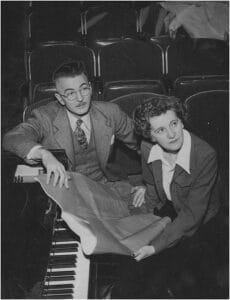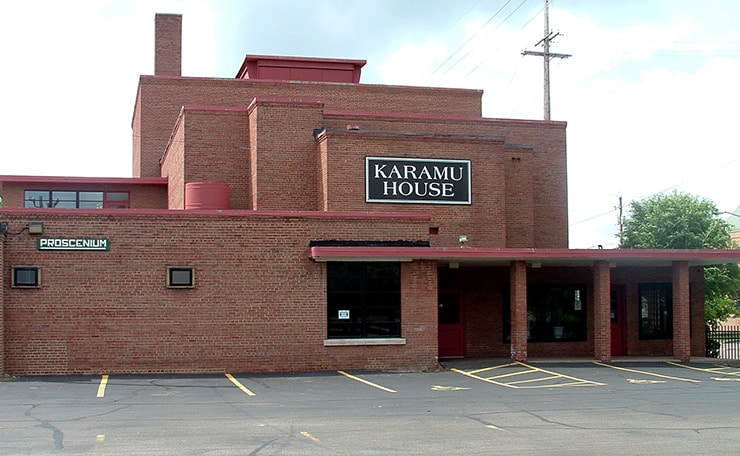By Bob Ferguson
The Karamu House Theatre is unquestionably the oldest African-American performing arts theater in operation today in the United States. Karamu was established and opened its doors in 1915 as The Neighborhood Playhouse Settlement, located at 2239 E. 38th Street. The word (Ka-ra-mu) in Swahili means “a place of joyful gathering,” where families can assemble to share their stories, feast, celebrate, and enjoy all in a festive atmosphere.

It was opened by founders Russell Jelliffe and Rowena Woodham. The couple met while studying to be social workers at Oberlin College, a fine arts institution in Ohio. After finishing at Oberlin, they spent a year in graduate school at the University of Chicago. Shortly afterward, the couple married and came to Cleveland with big ideas and established the East Side Settlement House that eventually became The Karamu House Theater.
It was essential to create a space like the Karamu House because during the mid-1850s until the early 1930s, vaudeville theater houses were very popular in downtown Cleveland. Vaudeville shows were minstrel entertainment which included white actors in blackface. The shows featured negative caricatures and repulsive images of Black people dancing and grinning like buffoons to 19th-century music.
One such venue opened its doors in March 1903, named The Colonial Theater located on Chester Avenue. At that time, vaudeville shows were popular in America with very scripted stereotypes by minstrels combined with burlesque shows that catered mainly to the upper class. The shows were generally divided into two parts and the productions normally began with silent “dumb darkie acts” and ended with a headliner performance featuring very colorfully burlesque models.
In 1930, the Conley Theater hosted its last show, called “Mysteries of Love, and closed its doors. The building stayed empty until 1932 when it was torn down to make way for a parking lot.
At that time, Cleveland had no outlets or organizations that welcomed African Americans where they could develop or display their acting, musical, and dancing talents and skills.

Cleveland’s Karamu House Theater was one of the primary influences that encouraged America’s theaters to project more positive images of Black people. Rowena Jelliffe made a concerted effort to get Black children to audition and cast them for interracial stage plays. These plays featured both Black and white children, which eventually led to drama classes for Black adults. During the Harlem Renaissance, the Karamu House became the principal place for aspiring African-American artists, writers, and performers to have a chance to display their talents on stage. Within a short time, The Karamu House became nationally and internationally known for promoting multiracial theater and arts. In 1939, a fire destroyed the old theater building on East 38th Street.
In 1945, Karamu broke ground for a 2-theater complex located at 2355 East 89th and Quincy Avenue. The new building provided more provisions for music, better dressing rooms, and several other updates for dance classes and visual arts. The financial contributions from philanthropist Leonard Hanna Jr. and the Rockefeller Foundation were incredibly beneficial for the future of the theater.
Many actors, actresses, poets, singers, and dancers who trained at Karamu have gone on to appear on Broadway, in Hollywood, and on concert hall stages all over the world. Talented people such as Langston Hughes, Ruby Dee, Ron O’Neal, Robert Guillaume, Imani Hakim, Bill Cobb, James Pickens Jr, Vanessa Bell Calloway, and numerous others. Tony Award-winning South African, Zakes Mokae performed at The Karamu House during the 1960s before gaining international acclaim for his work on Broadway and in films. Another notable star is Cleveland’s own Peter Lawson Jones who began his acting career at The Karamu House. Jones has gone on to appear in several major television series and has also embraced the Hollywood silver screen in movies like “White Boy Rick,” “Alex Cross” featuring Tyler Perry, and most recently as Ruben, the estranged friend in the film “A Man Called Otto.” Today, Karamu House is well recognized for producing playwrights, producers, directors, film equipment operators, stagehands, costume designers, and numerous other artistic professionals who have gained access to every theatrical sphere imaginable.
At present, Karamu’s building on East 89th Street is undergoing a major restoration and renovation. Currently some shows are being held downtown at Playhouse Square in the Allen Theater. Visit the Karamu website for current show listings with time and location.
The Karamu House has done incredible work for decades toward developing minority artists and bringing them together to make Cleveland, Ohio proud of its theater’s legacy.




